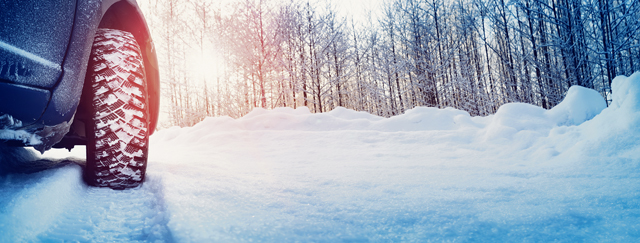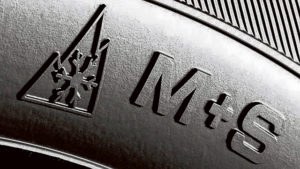Forget about pumpkin spiced lattes, this is the time to be thinking about — and possibly be investing in — tires.
Whether this will be one’s first or fiftieth winter in Germany, get familiar with “von O bis O” or “from October to Ostern (Easter).”

There are no specific dates for the use of winter tires, but according to garrison safety chief Larry Strickland, most German motorists follow the “von O bis O” rule of thumb. He says if you haven’t done so already, now is the time to change your tires for winter.
Not only having the correct tires for road conditions is just sound, safe practice but also, it’s the law, according to Strickland. In 2015, German federal law was amended to require the use of specific tires when conditions are icy.
The law “clearly states that under icy conditions [bei Glatteis, Schneeglätte, Schneematsch, Eis- und Reifglätte] you must not drive without snow tires on your vehicle,” said Strickland. “Since it’s difficult to predict the weather, for all practical purposes, the old ‘von O bis O’ rule still applies.”

When shopping for tires or when gaining a set from a car purchase, ensure the walls of the tires are marked with at least the M+S symbol. M+S stands for “Matsch und Schnee,”or mud and snow. The same applies to rental cars. If renting during the O to O timeframe, look for the marking.
According to Strickland, M+S tires do not have to be winter-specific tires. All-year or all-weather tires marked with M+S also qualify but that will all change in a few years.
“Tires with only the old M+S mark will be allowed until September 30, 2024, but the German automobile club recommends getting new tires with the Alpine ‘3-peak-mountain’ mark as soon as possible,” said Strickland. “The new law also applies to trucks and buses.”
When shopping for new tires, he recommended looking for both symbols as it may be worth the investment now to be safer on the road and in compliance with the upcoming requirement.
Tires marked with the Alpine symbol are manufactured specifically for ice and snow conditions. These are best for road conditions found in Rheinland-Pfalz, particularly around the Baumholder community where winter hits harder than in the Kaiserslautern area.
“It all comes down to the rubber of the tire and the grip on the road,” said Strickland. He explained, as the tire gets colder, the rubber hardens providing less traction. An all-season tire with the M+S marking may get you through the season but a winter or snow tire is best for traction on icy roads.
For folks coming from duty stations such as Alaska and Colorado where studded tires are the norm, Strickland said those should stay in North America. Studded tires are illegal in Germany. Snow chains are the go-to, and mandatory in some conditions, for alpine driving in Europe.
The price of snow tires varies widely depending on the make and model of the vehicle. Online may be a good option but be mindful of shipping dates as roads may get icy before the tires arrive.
Violating this law can be costly. If a driver is in an accident or needs assistance after a winter wipe out, the driver could be fined at least 60 euros and potentially have a point added to his or her license, compounding to an already stressful situation.
And those fines could add up quickly.
“Depending on the state your incident takes place, that can be a single, 60 euro fine or a 600 euro fine for all five tires being out of compliance,” said Strickland. “Don’t forget about that spare.”
Six hundred euros. That’s a lot of pumpkin spiced lattes.
Stay up-to-date on road conditions for garrisons and sites throughout Europe by going to https://www.home.army.mil/rhenland-pfalz, and clicking on “Road Conditions.”


